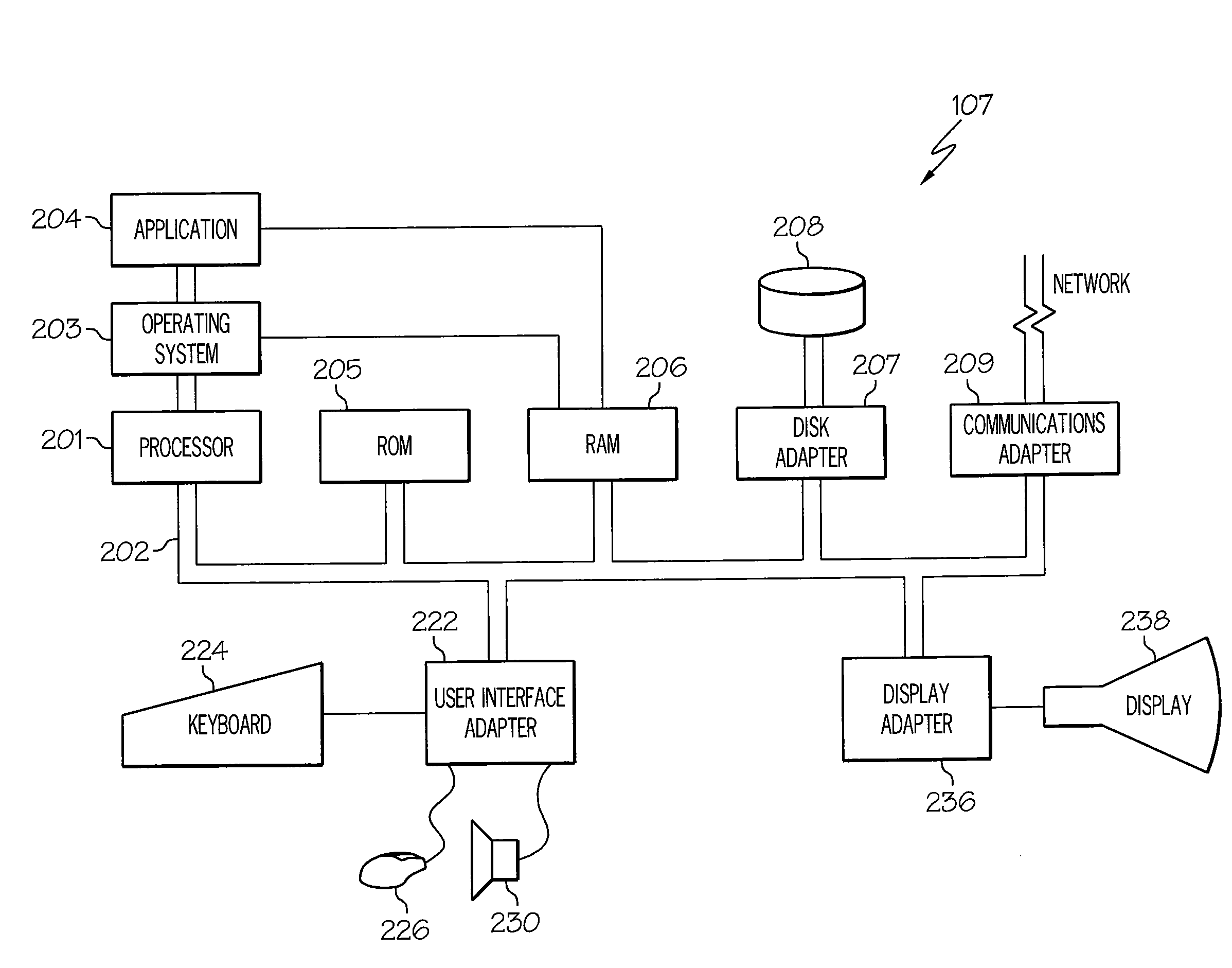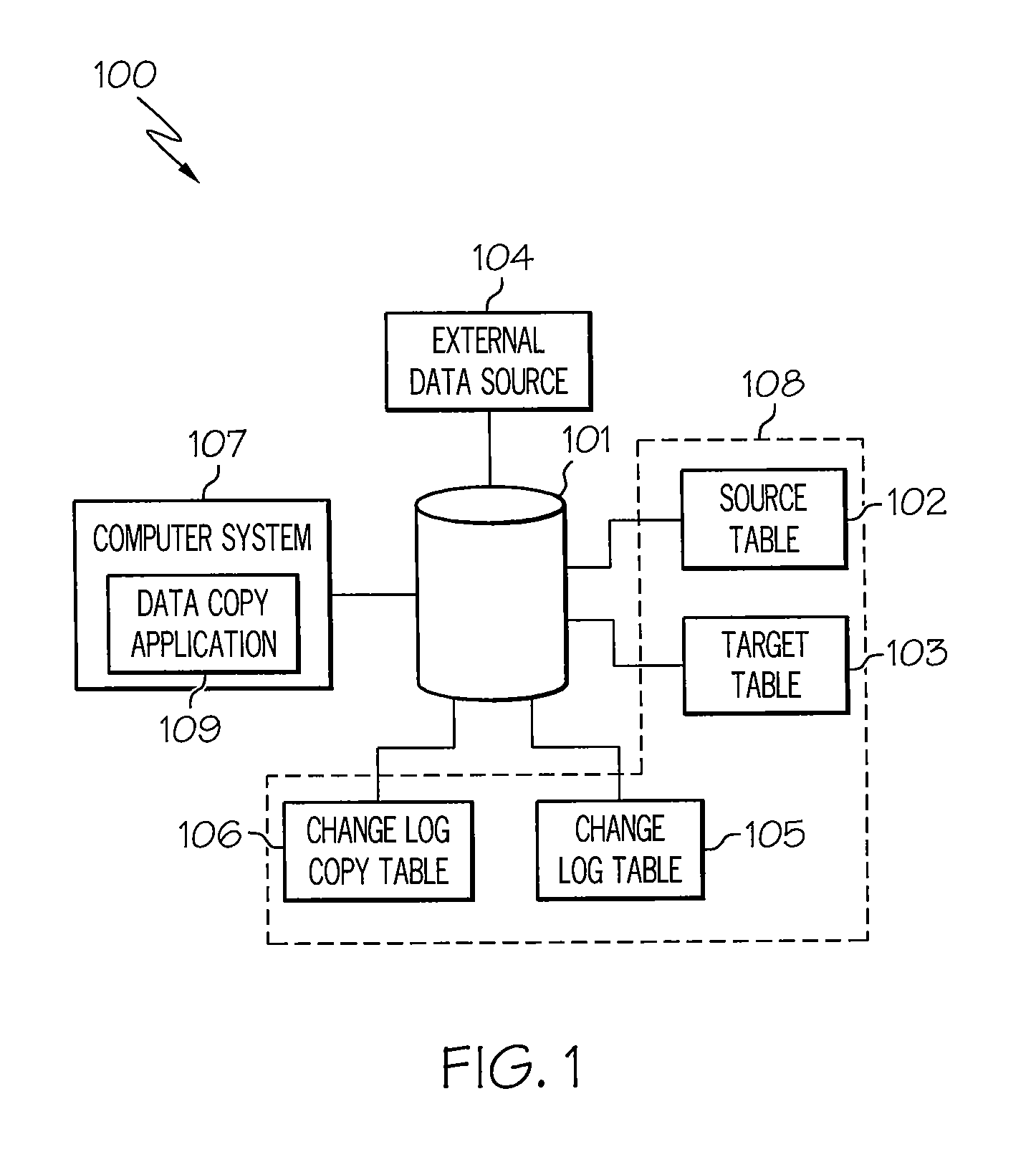Ensuring that the archival data deleted in relational source table is already stored in relational target table
a technology of relational source table and target table, applied in the field of relational database, can solve the problem that archive data stored in the deleted rows may not be found
- Summary
- Abstract
- Description
- Claims
- Application Information
AI Technical Summary
Benefits of technology
Problems solved by technology
Method used
Image
Examples
Embodiment Construction
[0022]The present invention comprises a method, system and computer program product for ensuring that archival data deleted in a source table is already stored in a target table. In one embodiment of the present invention, an external data source (e.g., online ordering application) sets a flag in a table (referred to herein as the “change log table”) to identify the row in the source table to be deleted. Further, the external data source inserts a new row in the change log table as the external data source modifies or creates a row in the source table, where each new row in the change log table includes a primary key value associated with the modified / created row in the source table. An application copies the distinct values for the primary keys listed in the change log table and inserts them in a second table (referred to herein as the “change log copy table”). That is, the application copies the values for each unique primary key listed in the table and inserts them in the second ...
PUM
 Login to View More
Login to View More Abstract
Description
Claims
Application Information
 Login to View More
Login to View More - R&D
- Intellectual Property
- Life Sciences
- Materials
- Tech Scout
- Unparalleled Data Quality
- Higher Quality Content
- 60% Fewer Hallucinations
Browse by: Latest US Patents, China's latest patents, Technical Efficacy Thesaurus, Application Domain, Technology Topic, Popular Technical Reports.
© 2025 PatSnap. All rights reserved.Legal|Privacy policy|Modern Slavery Act Transparency Statement|Sitemap|About US| Contact US: help@patsnap.com



